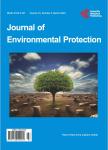Assessing Lead Removal from Contaminated Water Using Solid Biomaterials: Charcoal, Coffee, Tea, Fishbone, and Caffeine
Assessing Lead Removal from Contaminated Water Using Solid Biomaterials: Charcoal, Coffee, Tea, Fishbone, and Caffeine作者机构:Chemistry Department Dillard University New Orleans USA.
出 版 物:《Journal of Environmental Protection》 (环境保护(英文))
年 卷 期:2013年第4卷第7期
页 面:741-745页
学科分类:1002[医学-临床医学] 100214[医学-肿瘤学] 10[医学]
主 题:Heavy Metals Chemisorptions Coffee Lead Fishbone Phytoremediation
摘 要:Previous research has documented that solid biomaterials such as charcoal or waste coffee and tea have been used to remove heavy metals from contaminated aqueous solutions through adsorption. However, these studies used very low heavy metal concentrations between 10 to 100 ppm. Recently published research work reported that extracts of edible plants and fruits were able to effectively remove lead from contaminated aqueous solution. This paper evaluates the ability of charcoal, un-brewed coffee and tea, fishbone, and caffeine to remove lead from contaminated aqueous solutions. The order of lead removal from 1300 ppm of lead solution is Charcoal (100%) Tea (97%) Coffee Ground (88%) Instant Coffee (83.5%) Coffee Bean (82%) Fishbone (76%) Caffeine (1.3%). These results clearly demonstrate that not all solid biomaterials can adsorb lead and that caffeine, a component of coffee and tea does not participate in the removal of lead from contaminated solutions. Furthermore, the results suggest that two possible processes may be involved in the reactions presented here: adsorption of lead by the solid substrates and precipitation of lead by the solubilized biochemical components of the substrates.



